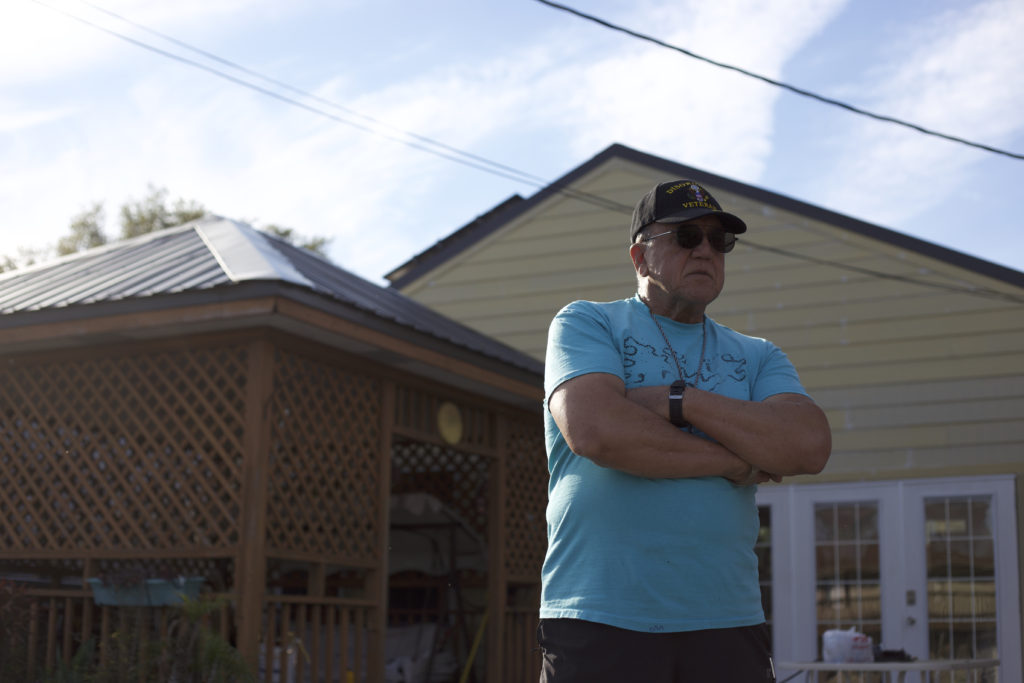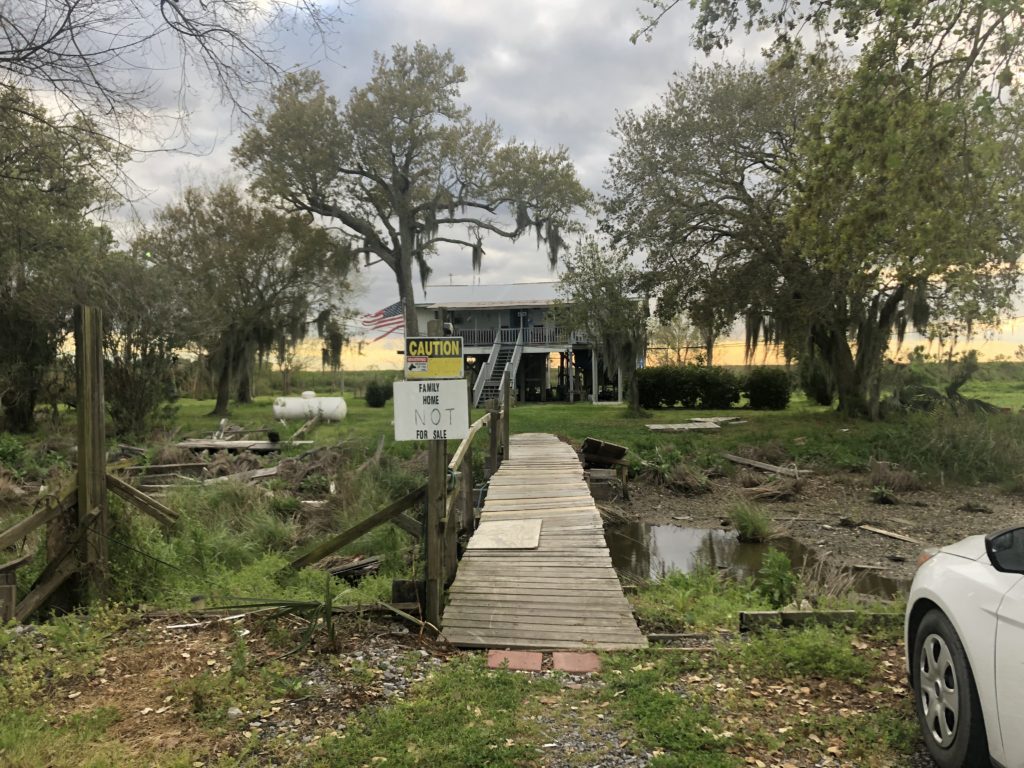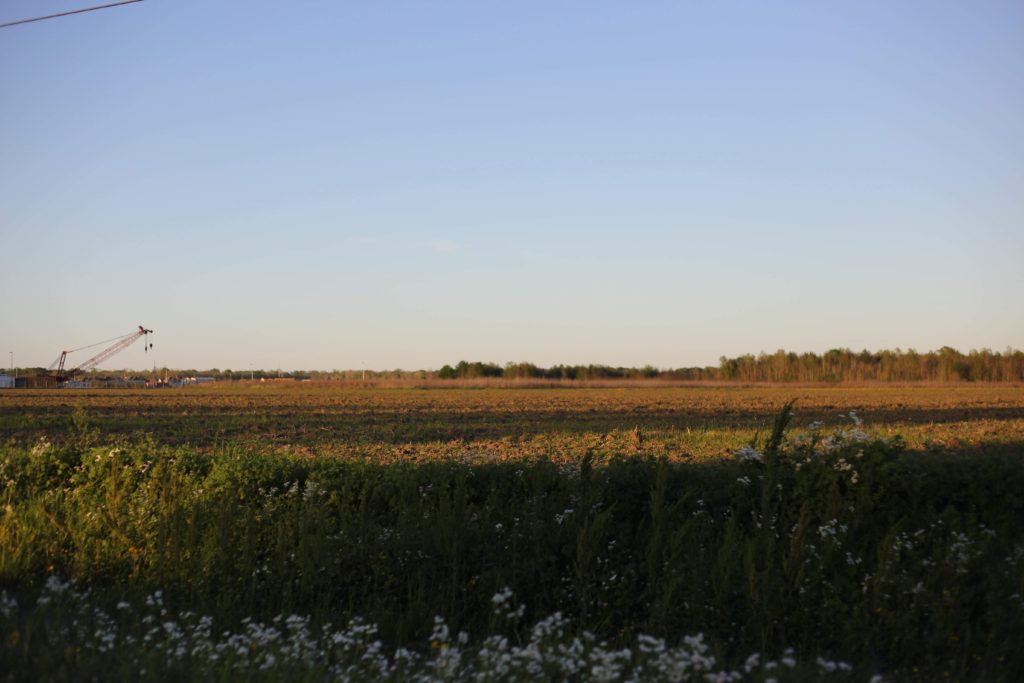The natives of the Isle De Jean Charles are facing huge amounts of land loss due to sea levels rising. What used to be 20,000 acres of land on the isle has dwindled to 350 acres. The Isle used to be surrounded by bountiful marshes and vast amounts of wildlife but has been swallowed up by water over the years. The Isle is not only losing land at an exponential rate but residents as well; most of the natives of the isle are now spread out through the parish of Houma, LA. Houma is the parish in the area that includes the Isle De Jean Charles. The Isle has been shrinking since 1955 and has had land loss of 98 percent. With the consistent amount of land loss and storm surges, it had been slowly driving out the Isle residents over the years. The community used to hold over 200 people and currently has fewer than 40 residents left. The remaining residents of the Isle were deemed by the media the first “U.S. Climate Refugees.”
In 2016, a resettlement plan had emerged to help relocate the natives of the Isle De Jean Charles. A 515-acre piece of land was bought to be the new home for the Biloxi-Chitimacha-Choctaw tribe members of the Isle.
Chief Albert Naquin, a longtime resident of the isle and chief of the Biloxi-Chitimacha-Choctaw tribe, said that the construction of the new community was supposed to begin in March of this year.

“It was four years in January, and they’re still working on it,” said Chief Naquin.
The Isle could have avoided the major problems it has today if it was included in the Morganza Spillway. The Morganza is a flood control structure in the state of Louisiana that stretches along the lower Mississippi River.
Mart Black, the director of Coastal Restoration and Preservation in Terrebonne Parish, believes that if the isle would have been included in the plan, it would have been saved. The decision to exclude the isle from the plan was made back in 1996. According to Black, Louisiana has had its issues with climate change since the 1930’s. Black believes that both climate change and the geology of the isle are contributory factors to issues that it faces today. Black stated that the core of engineers decided from a cost benefit stand point, it didn’t make sense to include the Isle De Jean Charles in the Morganza.
“The big issue is that we are relocating these people, and we are uprooting their culture and trying to establish it at another site that has no cultural meaning,” said Black.

The resettlement plan was funded by the U.S. Department of Housing and Urban Development. The competition is called the National Disaster Resilience Competition. According to the HUD, HUD had awarded the state of Louisiana $92 million. The funds were split between the LA SAFE Fund and the Isle De Jean Charles, the tribe received $48 million for the resettlement.
According to the Isle De Jean Charles Resettlement plan, the resettlement process was turned into four phases. The first phase consisted of data gathering and engagement with the community. The goal of this phase was to engage with isle residents and take note of their priorities. In this phase the resettlement team learned that the isle residents wanted privacy, seclusion, access to water, safety, flood protection, continued access to the island and maintaining and strengthening cultural identity. The team focused on looking into the values of each individual to help create a well-represented new community.
The second phase was site selection, acquisition, and master planning. The second phase consisted of multiple meetings with the tribe members of the isle to find the right location for them. Between December of 2016 through June 2017, the state conducted site evaluations and allowed the Isle residents to visit sites. From July 2017 to December 2017, the resettlement team chose a consultant team to begin developing the master plan and discussed the pros and cons of the new location. Between January 2018 to September 2018, a steering committee held two design workshops for the planning of the new community. In March of 2018, the state placed a purchase option on the property that was preferred by the isle residents. In December of 2018, the state purchased the property. The second phase was the longest lasting phase spanning over three years of planning and designing.
The third phase would consist of development and construction. The third phase would be the execution phase, where it focuses on implementing the master plan created in the second phase. It will consist of reviewing the environment, finalizing site design work, acquiring permits, laying infrastructure, constructing housing, initiating business development activities, launching workforce training programs, and helping residents move in. Currently, the resettlement process is in the third phase, but no construction has been started yet.

The fourth phase would consist of living in the new community. It will help alleviate the concerns of some of the isle residents who feel like the transition will be too great. This phase will have the resettlement team work with the community to ensure that there are new opportunities, new connections and a new peace and security to be found.
The location of the new property is 40 miles north of the Isle De Jean Charles near Schriever in Terrebonne Parish. Although, construction has yet to begin for the new piece of land, Chief Naquin was satisfied with the $11 million purchase.
“It was a good piece of land, it was high in elevation,” said Chief Naquin. “It was the land we wanted.”
The few tribe members that remain on the isle are very reluctant to leave and plan to stay for the foreseeable future. Whether the isle residents believe in climate change or not, the consensus was that their land will no longer exist within the next 40 years.